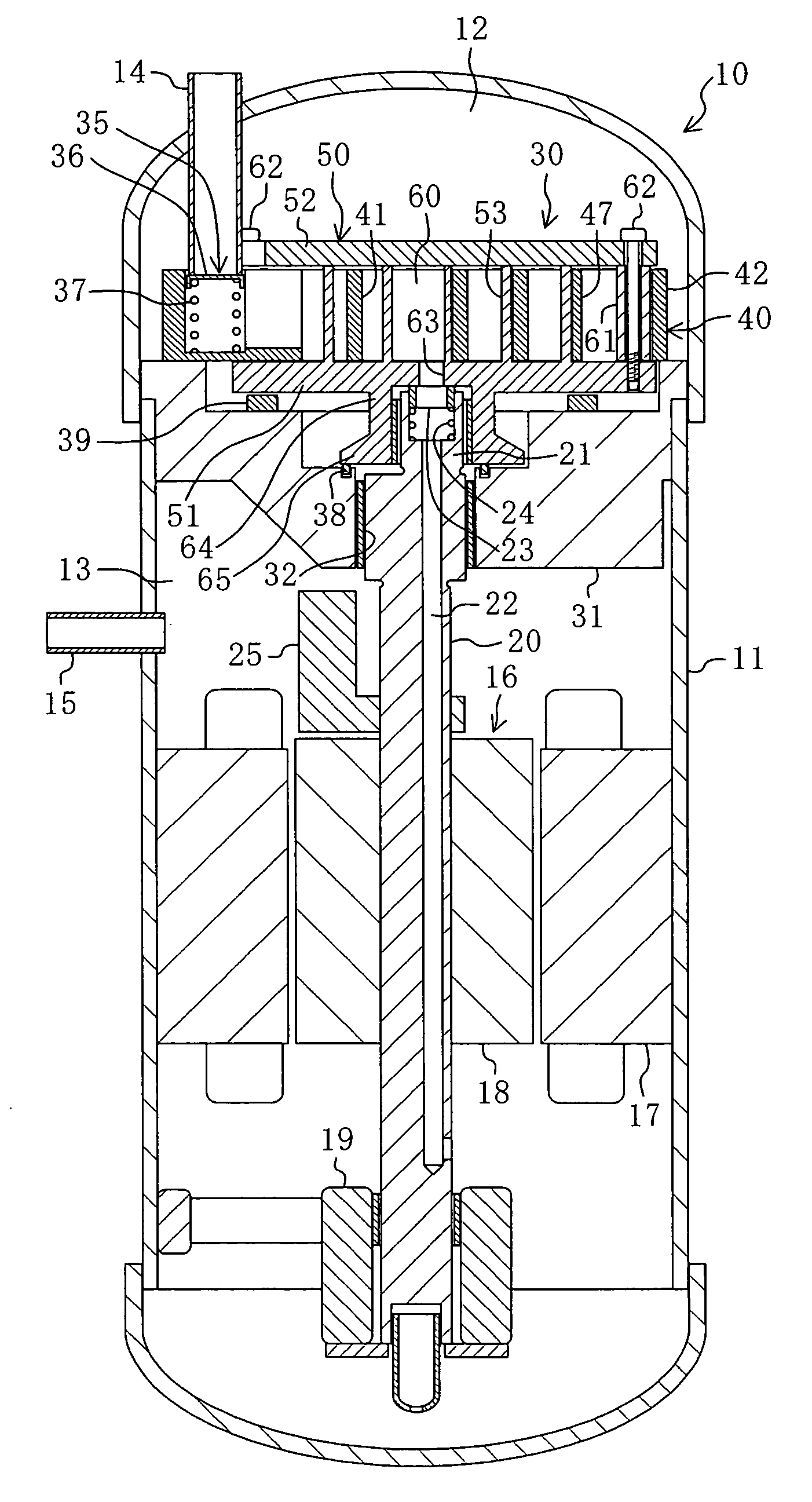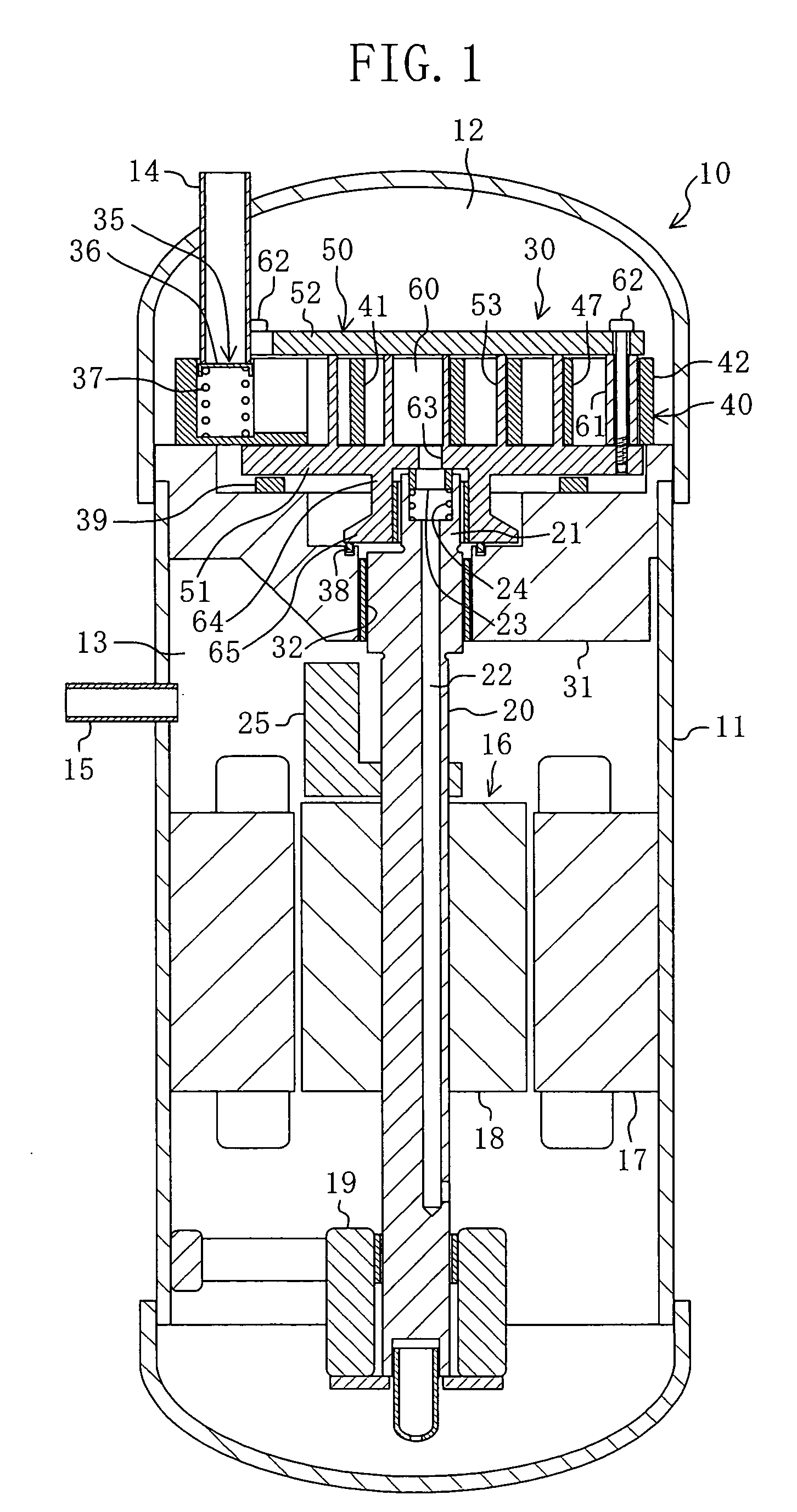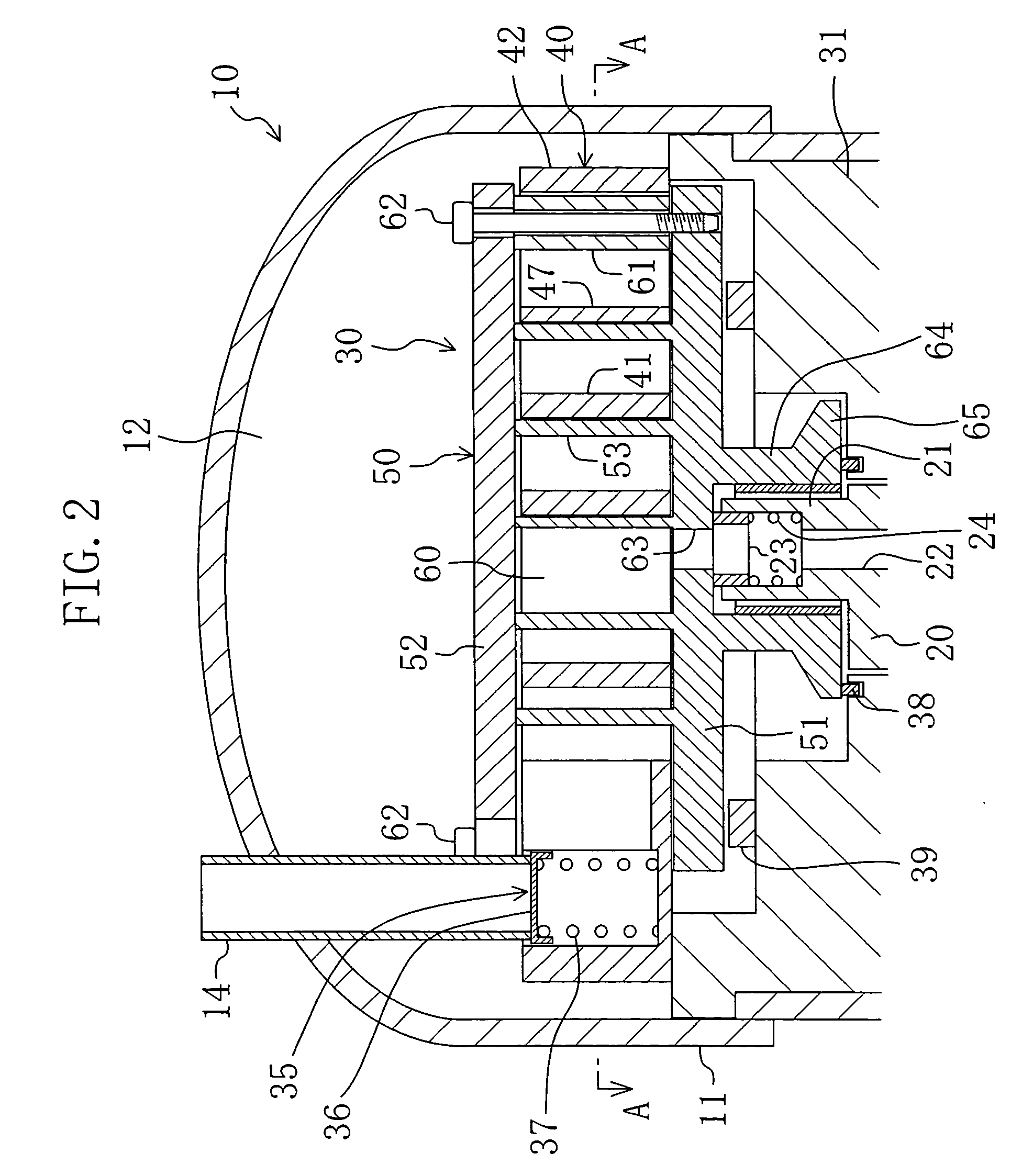Scroll type fluid machine
a fluid machine and scrolling technology, applied in the direction of machines/engines, liquid fuel engines, rotary piston liquid engines, etc., can solve the problems of reducing the efficiency affecting the reliability of the fluid machine, and the difficulty of providing highly accurate machined sliding surfaces to the wrap tip and the flat plate portion, so as to improve the reliability of the scrolling fluid machine, increase the frictional resistance, and reduce the effect of deformation
- Summary
- Abstract
- Description
- Claims
- Application Information
AI Technical Summary
Benefits of technology
Problems solved by technology
Method used
Image
Examples
embodiment 1 of invention
[0149] A first embodiment of the present invention is a scroll compressor (10) composed of a scroll type fluid machine according to the present invention. This scroll compressor (10) is provided in a refrigerant circuit of a refrigerating apparatus.
[0150] As shown in FIG. 1, the scroll compressor (10) has a so-called hermetically sealed construction. This scroll type compressor has a casing (11) which is shaped like a longitudinal, cylindrical, hermetically sealed container. A compression mechanism (30), an electric motor (16), and a lower bearing (19) are disposed in that order (from top down) in the inside of the casing (11). Additionally, a vertically-extending driving shaft (20) serving as a rotary shaft is disposed in the inside of the casing (11).
[0151] The interior of the casing (11) is divided vertically by a housing (31) of the compression mechanism (30). In the inside of the casing (11), a space above the housing (31) becomes a low pressure chamber (12) and a space below t...
fourth modification example
[0234] Fourth Modification Example of First Embodiment
[0235] In the scroll compressor (10) of the foregoing embodiment, in the stationary scroll (40) the height of the outer peripheral portion (42) is equal to that of the stationary side wrap (41). However, instead of employing such an arrangement the following arrangement may be used.
[0236] In other words, the height of the outer peripheral portion (42) may be made somewhat greater than the height of the stationary side wrap (41) (see FIG. 14). In the present modification example, the second flat plate (52) comes into sliding contact with the upper surface of the outer peripheral portion (42) even when the movable scroll (50) is positioned at the downmost position, thereby ensuring that a clearance is always secured between the upper tip of the stationary side wrap (41) and the second flat plate (52).
[0237] Consequently, the tip of the stationary side wrap (41) is prevented from suffering damage from forceful frictional contact wit...
fifth modification example
[0240] Fifth Modification Example of First Embodiment
[0241] In the scroll compressor (10) of the foregoing embodiment, the height of the stationary side wrap (41) is constant in the stationary scroll (40). However, instead of such an arrangement the following arrangement may be employed.
[0242] To sum up, as shown in FIG. 15, the height of the stationary side wrap (41) may become gradually smaller toward the center side from the outer peripheral side of the stationary side wrap (41). In the present modification example, the upper tip surface of the stationary side wrap (41) is an inclined plane inclining downwardly toward the center side from the outer peripheral side of the stationary side wrap (41). On the other hand, the lower tip surface of the stationary side wrap (41) is an inclined plane inclining upwardly toward the center side from the outer peripheral side of the stationary side wrap (41). In addition, it may be arranged such that only the upper tip surface is inclined and ...
PUM
 Login to View More
Login to View More Abstract
Description
Claims
Application Information
 Login to View More
Login to View More - R&D
- Intellectual Property
- Life Sciences
- Materials
- Tech Scout
- Unparalleled Data Quality
- Higher Quality Content
- 60% Fewer Hallucinations
Browse by: Latest US Patents, China's latest patents, Technical Efficacy Thesaurus, Application Domain, Technology Topic, Popular Technical Reports.
© 2025 PatSnap. All rights reserved.Legal|Privacy policy|Modern Slavery Act Transparency Statement|Sitemap|About US| Contact US: help@patsnap.com



